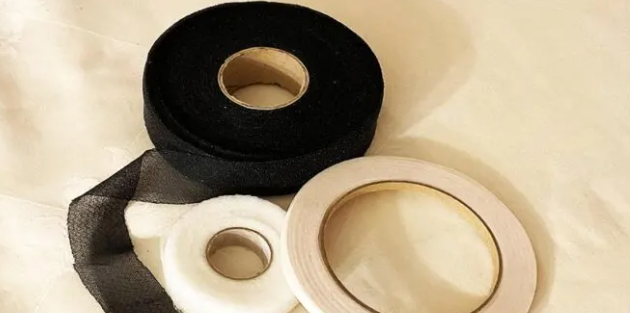The Ultimate Guide to Hem Tape: Types, Uses, and Tips for Beginners

Navigating the sewing and fabric alteration world can seem daunting for beginners, but fear not—there’s a simple, no-sew solution perfect for quick fixes and easy adjustments: hem tape. This versatile tool is a must-have in any DIY fashion enthusiast’s arsenal, offering a straightforward way to alter the length of garments without requiring intricate sewing skills. Whether you’re looking to hem a pair of pants, shorten a dress, or undertake a creative fabric project, this adhesive solution covers you. So, this guide will explore this adhesive fabric binder’s different types and myriad uses and share some invaluable tips for beginners.
What Is It?
This adhesive solution is a double-sided strip of fabric adhesive that can bond fabric together without stitching. It’s applied between two pieces of cloth and then activated by heat, usually with an iron, to create a strong bond that holds the fabric in place. This process is quick and effective for a wide range of fabrics.
Types of Hem Tape
There are primarily two types of this adhesive solution available on the market: fusible and non-fusible. Fusible tape is activated by heat and requires an iron to create the bond. It’s perfect for most fabrics, offering a durable, almost invisible finish. On the other hand, non-fusible works like a double-sided tape that can be used without heat, making it ideal for temporary fixes or fabrics that cannot be ironed.
Versatile Uses for Every Fashionista
This adhesive fabric solution’s applications extend beyond mere hemming. It can be used to discreetly mend tears, affix patches, or even create no-sew projects like fabric banners or curtains. For those looking to experiment with their wardrobe, it offers an easy way to adjust the length of garments or repurpose old clothing into something new and stylish.
Beginner-Friendly Tips and Tricks
For those new to using this adhesive solution, here are some tips to ensure your projects turn out great:
Test First: Always test the tape on a small, inconspicuous area of the fabric to ensure compatibility and that the heat setting will not damage it.
Measure Twice: Before applying, measure the area to be hemmed carefully and ensure everything is even to avoid a lopsided result.
Press, Don’t Iron: When activating the fusible with heat, press down with the iron rather than moving it back and forth. This prevents the fabric from shifting and ensures a stronger bond.
See also: Effortless Elegance: Crafting A Signature Style with Women’s Clothing
Caring for Garments
Maintaining garments altered with this adhesive solution is straightforward. Most fusible types can withstand washing and drying, but reading the product instructions for specific care guidelines is always a good idea. Remove the tape before washing items to preserve both the fabric and the integrity of the hem.
Additionally, it might be beneficial to check the hem’s adherence occasionally for garments with fusible types that have been through the wash. Repeated washing and drying cycles can sometimes loosen the bond, especially in high-heat or vigorous washing settings. In such cases, a quick reapplication or touch-up with an iron can restore the garment to its neatly hemmed state, ensuring it continues to look its best wear after wear.
Hem tape is a versatile and invaluable tool for anyone looking to delve into fabric alteration without requiring extensive sewing skills. Its ease of use, combined with the firm and durable bond it creates, makes it ideal for various applications, from adjusting garment lengths to creative fabric projects. Whether you’re a seasoned DIY enthusiast or just starting, integrating this adhesive solution into your toolkit can simplify your sewing tasks and expand your creative possibilities. Remember, with some practice and the correct type, the fashion and fabric alteration world is at your fingertips.





